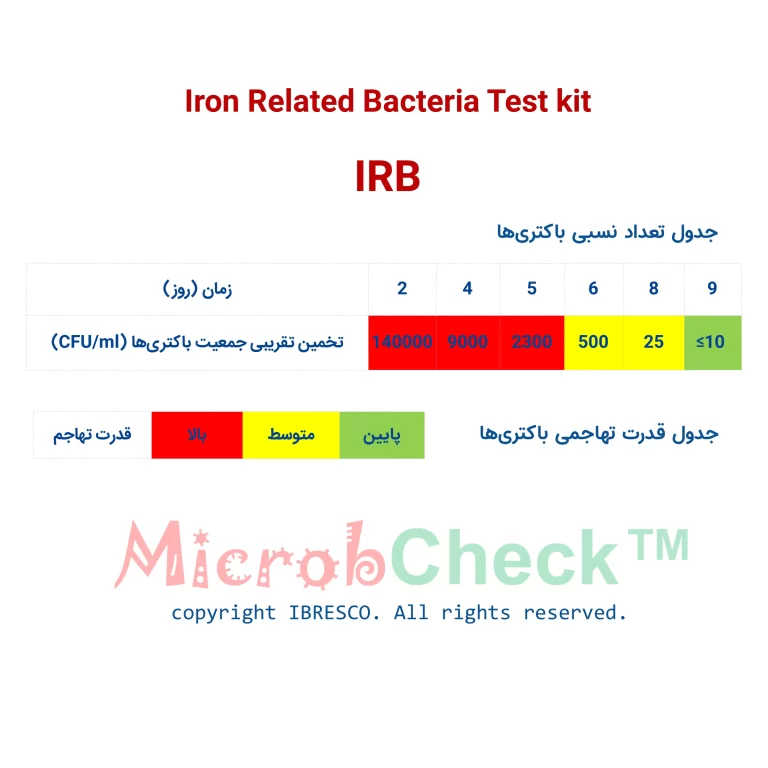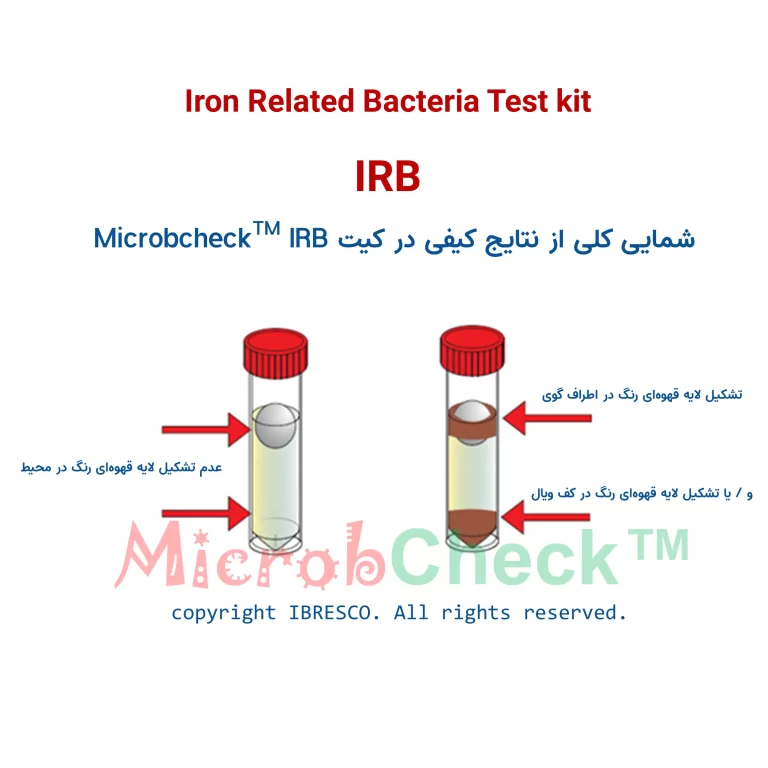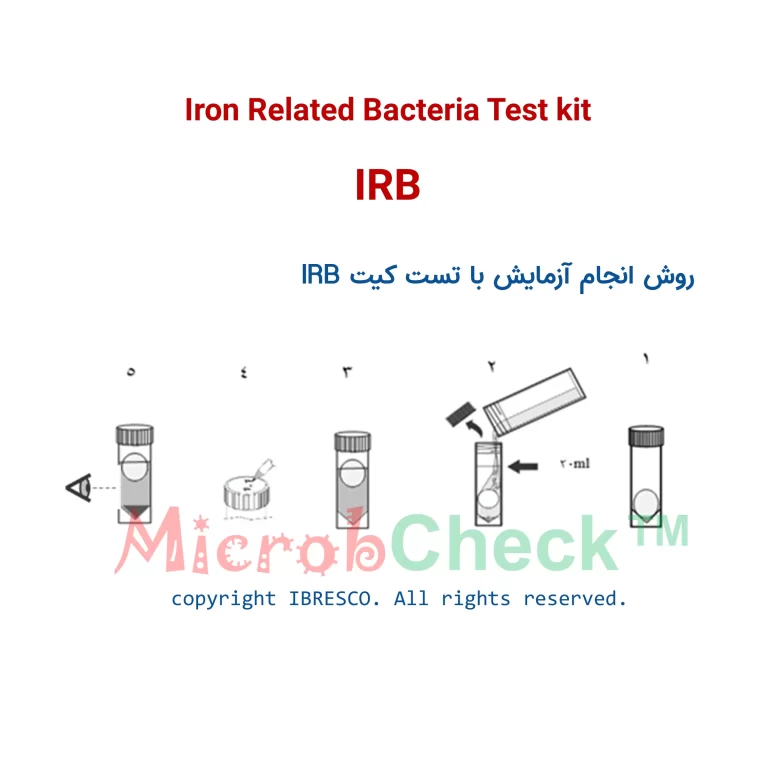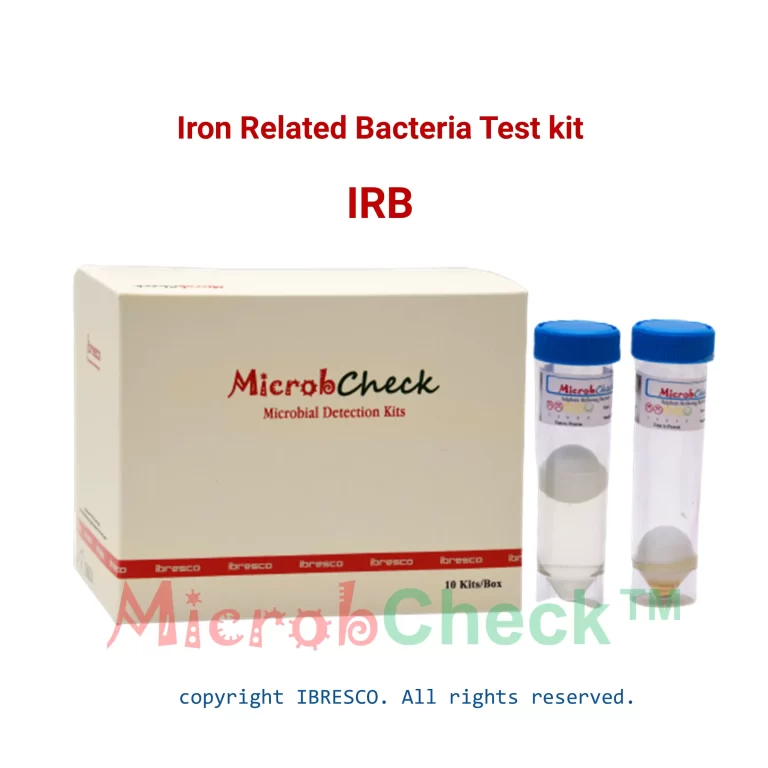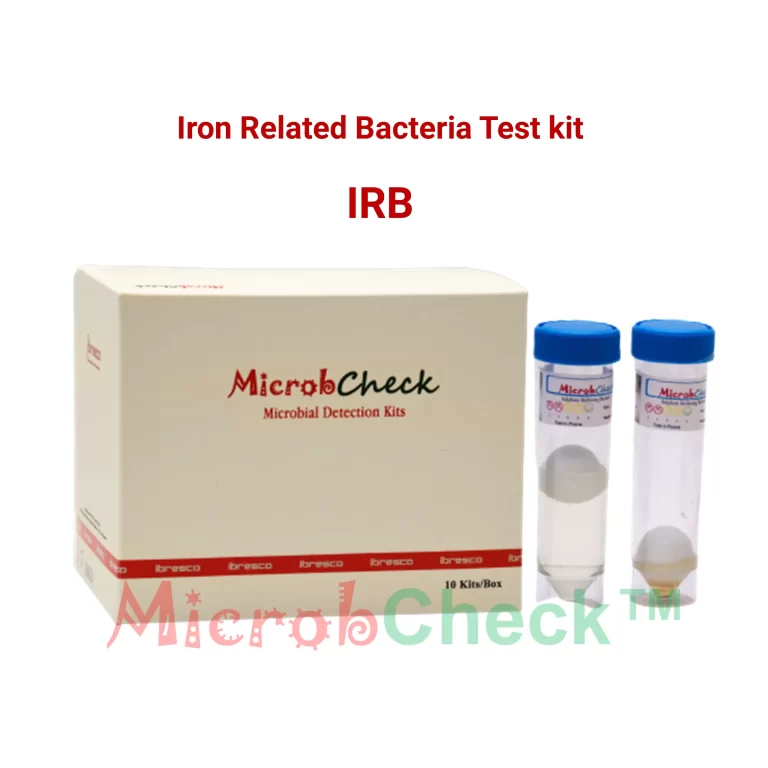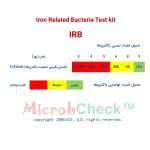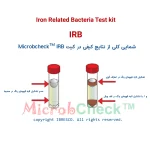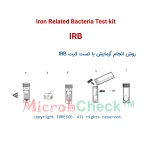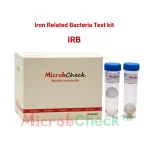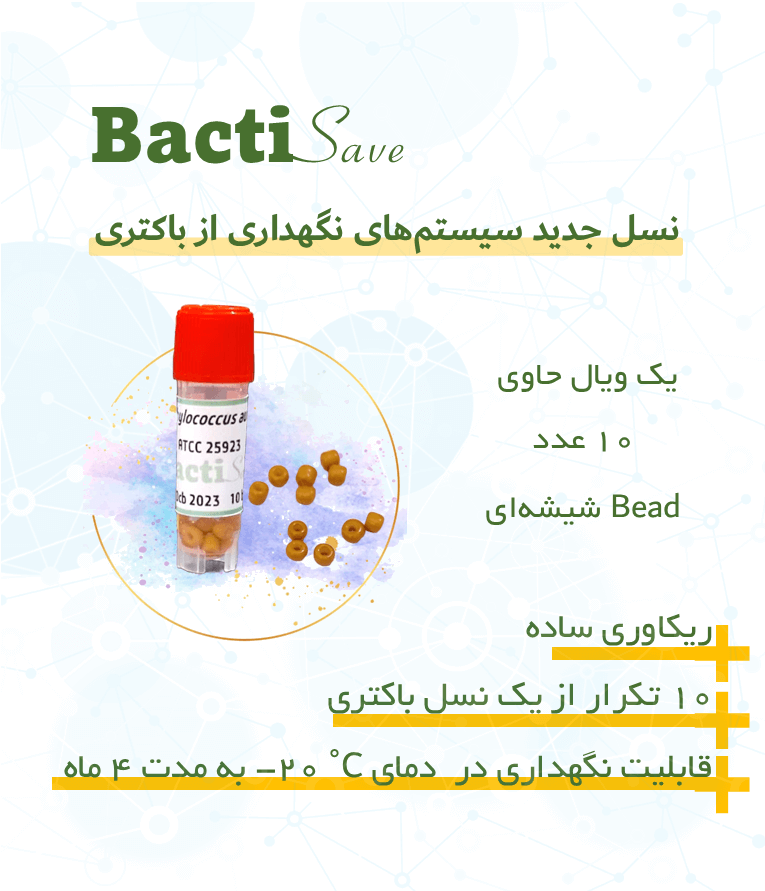توضیحات
Iron-related bacteria (IRB) are a type of bacteria that carry out their metabolism by obtaining carbon from atmospheric carbon dioxide and obtaining their required energy from soluble iron or manganese. These bacteria cause the accumulation of iron in areas where microbial growth occurs. Typically, this accumulation of iron is in the form of iron ferric crystals in oxides, hydroxides, and sometimes carbonates. This phenomenon usually results in a reddish-brown (brick) color. The result of the activity of these bacteria can cause corrosion in various industrial facilities, including oil and gas and water and wastewater. In addition, the creation of a bad odor, bad taste, and red color in drinking water are among the effects of the presence of these bacteria in water. Identification and enumeration of iron-related bacteria can be difficult due to the diversity of bacterial groups (iron-reducing bacteria and iron-oxidizing bacteria) associated with them. The Microbe Check kit is capable of identifying and estimating the relative population of both types of iron-related bacteria.
results interpretation
results interpretation
A. Semi-quantitative evaluation:
A pattern of positive results has been defined in MicrobCheck IRB kit, which can identify the two main characteristics of IRB bacteria, i.e., whether they are aerobic or anaerobic.
- IRB anaerobic bacteria; the formation of a brownish-orange, gray, or blackish sediment on the bottom of the vial indicates the presence of IRB bacteria as the dominant population of bacteria in the sample.
- IRB aerobic bacteria; the formation of a brownish-orange layer around the floating ball indicates the growth of IRB aerobic bacteria in the vial. Gas bubbles or a layer of sediment may also be observed in this state around the floating ball. In conditions where the water sample is saturated with gases, gas bubbles may form on the vial walls. It should be noted that these gas bubbles are not a sign of bacterial activity. Only the bubbles observed around the floating ball are a sign of IRB bacterial activity.
- A diverse population composed of aerobic and anaerobic IRB bacteria; in many cases, the color change of the medium to brownish-orange observed in the inoculated vial with the water sample is extensive throughout the length of the vial. This condition indicates the presence of a combination of IRB bacteria with diverse oxygen requirements, from anaerobic to microaerophilic and aerobic.
B- Quantitative evaluation of results; determination of aggressive potential
The invasive power of IRB bacteria present in the water sample is also determined by the elapsed heating time for the first bacterial activity to be observed. High invasive power means that the incubation time is 5 days or less. Moderate invasive power is defined in a time range between 5 to 8 days, and a time range of 8 to 10 days indicates low invasive power of IRB. . Incubation time above 10 days is considered as background, and invasion is not observed. The table below describes the relationship between incubation time, invasive degree, and relative number of IRB bacteria.




